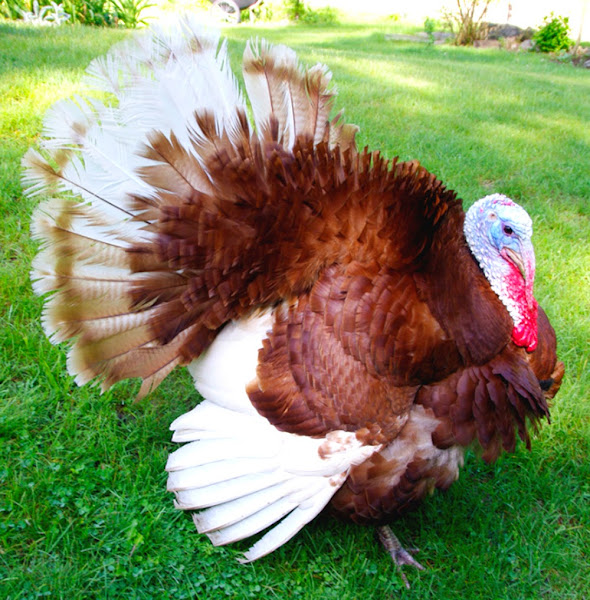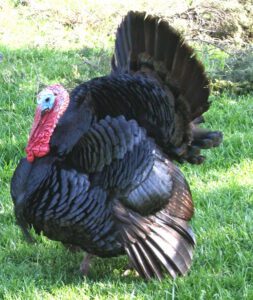Raising turkeys from poults is just like keeping and growing other poultry birds. But you should be careful before starting to raise turkey flock with day-od poults.
You have to ensure they grow into healthy, happy and productive adult turkeys. With proper care and some preparation, your baby turkeys will grow well and live happily.
Guide for Raising Turkeys From Poults
Learn more information about raising turkeys from poults.
Bringing Poults to Farm
After arriving the poults to your farm, inspect each poult one by one when you move them from the transport box. Dip the beak of each poult in water as soon as you keep them into the brooder.
Doing this will teach them where the water is and how to drink. In the case of shipped poults, they will be stressed from the transport process. So ensure that they are eating and drinking well for the first two weeks.
Caring Poults
You have to set up a brooder for your turkey poults, just like for baby chicks. As the turkey poult brooder is just like the brooder for baby chickens, you can use those resources for designing your turkey poult’s brooder.
But you have to set everything up and warm the brooder to 95° to 98° before bringing your poults. After bringing the poults inside the brooder, they will stay at the edges of the heating source if they are too hot, or will huddle under the lap if they are too cold (just like baby chicks).
So you should monitor the behavior of your poults and using a thermometer will be helpful guide to temperature. You have to lower the temperature inside the brooder at the rate of 5° per week until the temperature is the same as the outdoors.
Or lower the temperature at the same rate (5° per week) for 6 weeks. You can lower the temperature by raising the heat lamp a few inches each week.
Always have the poult’s feeders and waterers filled and placed properly. You shouldn’t keep the poults right under the lamp, but also don’t keep them too far from the center.
Place the feeders and waterers in such a way so that the poults can easily get food and water without getting either overheated or chilled. Hanging feeders work fine for turkey poults.
It will prevent poults from standing and pooping in the feed or knocking it over. You can use pine shavings for the bottom of the brooder (never use cedar). Some people also use clean sand for the bottom of the brooder when the poults are three weeks old.

Using sand is easy to clean and keeps the brooder dry. Ensure roosts and pen ready for them to move to after they outgrow and also have their pasture ready.
Preventing Problems
Particularly, turkey poults are prone to “starving out”. Starving out means some poults will hang back or get pushed away from the feeder, and they will actually starve to death despite food being available.
While your poults are feeding, keep a close eye on them for ensuring this doesn’t happen. In some cases, overcrowding can also cause some problems. Overcrowding can contribute to starving out.
So it is wise to ensure plenty of space inside the house for your poults. Ensure at least a 10ft x 10ft space available for a dozen of day-old poults. They will need more space in accordance with they get bigger.
Adding Roosts
Roosts are very important for turkeys. You can add a roost to your brooder by the three weeks of age of your turkeys. Roosts helps to keep the birds safe and they will feel extra comfort.
They will sleep warmer and more comfortably. Teaching turkeys to roost early will help them when they are eventually moved to roosts later.
Feeding & Watering
Please keep in mind that feeding and watering turkeys play a very important role in the growth and health. You might thinking about feeding your turkey poults.
There are various types of poultry feeds available in the market (starter, grower, finisher, medicated, non-medicated etc). But turkeys need such feeds which is high in protein, more than chickens.
Usually poultry starter or gamebird starter feed has around 28 percent protein. And these starter feed works for turkey poults for the first 12 weeks (medicated or non-medicated is your choice).
Most of the small scale farmers like to use non-medicated feeds. The protein in your turkey poult’s feed can be lowered to 20 percent after their 12 weeks of age.
But lower than this rate will result your turkeys won’t grow as big as they could. Along with providing well balanced and nutritious feeds, ensure availability of sufficient amount of fresh and clean water for your poults.
Moving Outside
In accordance to the growth of your poults, make your poult’s brooder bigger so they are not overcrowded. Lower the temperature of brooder every week at the rate of 5° until they reach 6 weeks of age.
For reducing temperature, you can raise the lamp or switch to lower wattage bulbs as they grow. You will need to harden off your turkey poults by exposing them to outside temperatures gradually.
You can allow your poults to access to an enclosed sun porch on nice days by their three weeks of age.
You can move your poults to the new house by their eight weeks of age. They should be fully feathered within this age. Ensure all your birds are fully feathered before moving them.
At this age, you can give them access to outdoors. But you should still provide the lamp at night for a week or two. And then you can move them to their new, grown-up turkey house, roosts and pen.
Monitor them nightly for a few days after moving them to the new house. Ensure that they are not getting damp or chilled. Thus you can grow poults to healthy turkeys.






